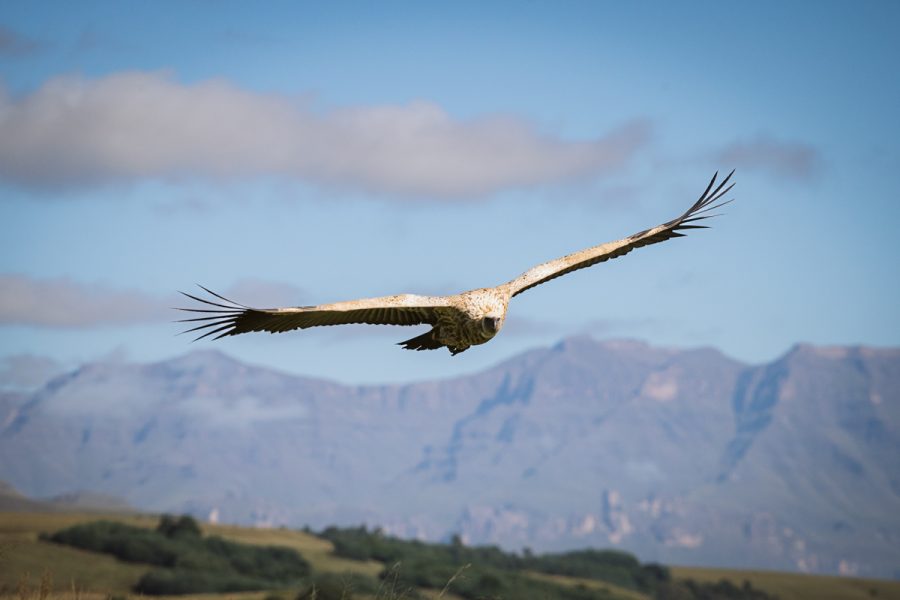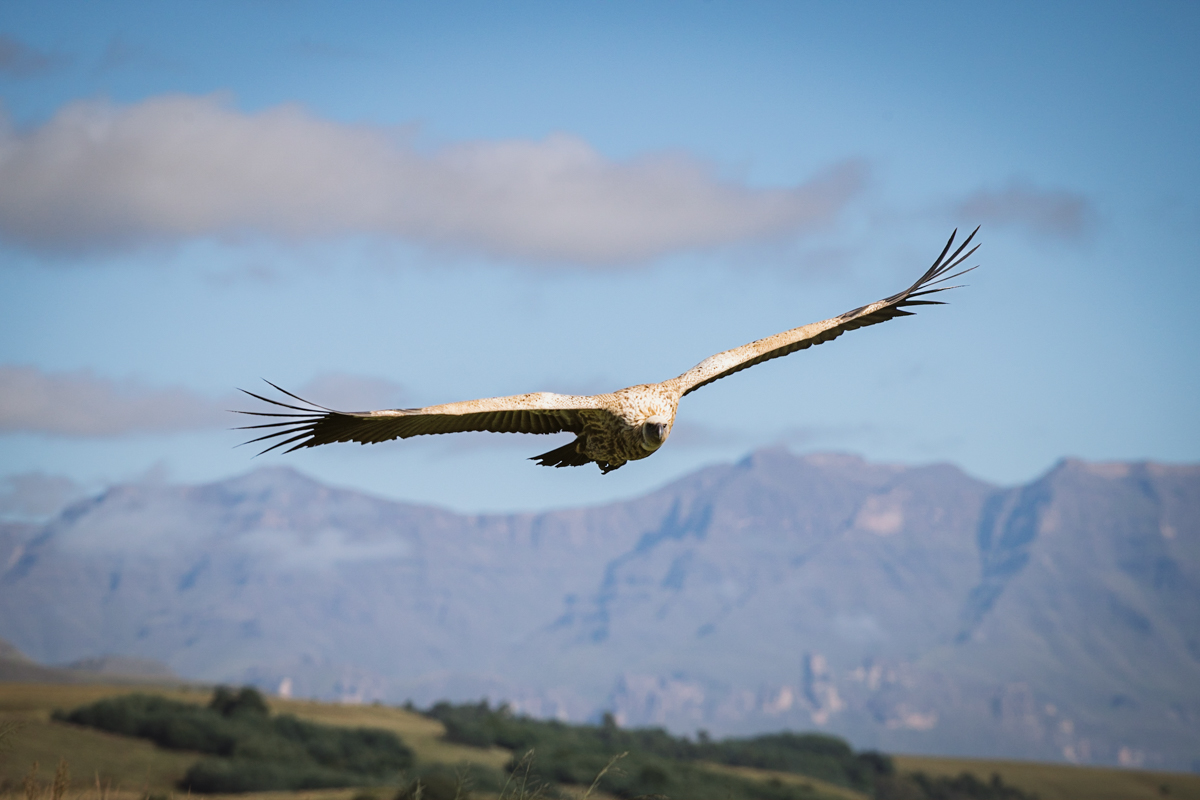
Southern Drakensberg Conservation Project highlights the plight of Endangered Vultures
Wildlife ACT’s Southern Drakensberg Conservation Project is calling attention to and actively mitigating the concerning decline of South African vulture populations. The Project, which falls under the conservation organisation’s Vulture Conservation Programme, calls on volunteers from around the world to assist in daily on-the-ground conservation efforts being made in the Southern Drakensberg region. The Project […]

Wildlife ACT’s Southern Drakensberg Conservation Project is calling attention to and actively mitigating the concerning decline of South African vulture populations. The Project, which falls under the conservation organisation’s Vulture Conservation Programme, calls on volunteers from around the world to assist in daily on-the-ground conservation efforts being made in the Southern Drakensberg region.
The Project places a significant focus on the cliff-nesting vulture species found in the Southern Drakensberg region, namely the vulnerable Cape Vulture and the regionally critically endangered Bearded Vulture. Despite being critical to our ecosystems, vulture numbers are in serious decline, with only 50 to 100 breeding pairs of Bearded Vulture in South Africa and Lesotho and about 4,500 breeding pairs of Cape Vulture left in South Africa.

Made possible through a collaboration between Wildlife ACT, the Drakensberg Conservation Initiative and Ezemvelo KZN Wildlife, this Project forms part of Wildlife ACT’s ongoing efforts to monitor and protect endangered and priority species and to assist in effective management of protected areas. The Project involves the monitoring of nesting sites, managing and maintaining safe vulture feeding sites, conducting a long-term remote camera trapping survey in the area, and responding to emergency events.
This Project aligns with and helps to support the national and provincial vulture conservation strategy of developing vulture-safe zones across the region. Additionally, the long-term camera trap survey allows for robust predictions regarding the status and abundance of the various species present. This survey will provide essential long-term insights into the ecosystem health and current species status within this UNESCO World Heritage Site.

“We are excited about the Southern Drakensberg Conservation Project and look forward to focusing some significant energy on the regionally critically endangered Bearded Vulture,” says Chris Kelly, co-founder of Wildlife ACT. “Vultures play a critical role in maintaining healthy ecosystems, and their decline is a serious concern. We hope to make a positive impact on the conservation of these magnificent birds within the Southern Drakensberg region.”
Vulture Conservation in the Southern Drakensberg
The Southern Drakensberg Conservation Project is a fairly new initiative and is heavily focused on vulture conservation, helping to conserve South Africa’s two cliff nesting species of vulture found in the area, namely the Bearded Vulture and Cape Vulture.
Due to their regionally critically endangered International Union for Conservation of Nature Red List status; the Bearded Vulture is of particular concern for this Project.
Vultures face a number of threats, including poisoning, electrocutions and collisions with energy infrastructure, habitat loss, and food shortages. Not only are these birds a vital part of our ecosystem; they are also equipped with a digestive system that contains special acids able to handle a number of diseases that are seriously harmful to human beings, making their protection critically important for preventing the spread of disease.

“Vultures provide vital ecosystem services in our natural, agricultural, and rural environments,” explains Wildlife ACT’s Vulture Conservation Programme Manager, Anel Olivier. “The important role they play in the cycling of nutrients through the highly-efficient disposal of organic waste from the environment is of utmost importance to human health and environmental integrity. They are adapted to efficiently dispose of rotting flesh and bone, as well as other organic waste, thereby reducing the spread of disease amongst wildlife and livestock, as well as abating the risk of pathogen spill-over to humans.”
Working in and around protected areas
The Project takes place both in and around the Maloti-Drakensberg Park World Heritage Site, a crucial stronghold for several threatened and endangered species. The Heritage Site is a vast protected area spanning over 240,000 hectares and stretching along the border of South Africa and Lesotho and is home to an incredible diversity of plants and animals. The Bearded Vulture has experienced a drastic decline during the past century, resulting in an isolated local population restricted to the Maloti-Drakensberg mountain range.
“One of the great things about this Project is that it demonstrates the importance of conducting conservation work outside of protected areas as well as inside of them. We are fortunate to have a number of local landowners supporting conservation efforts by offering our team access to their properties in order to monitor nests and conduct surveys. Without their support, we would risk missing out on vital information,” says Phillip Swart, Priority Species Monitor, Southern Drakensberg.

A voluntourism initiative
In order to sustain the work being done at its various Projects, Wildlife ACT has a voluntourism model in place which allows volunteers from around the world to actively participate in conservation efforts while working alongside knowledgeable professionals. During their time at the Project, volunteers live in a farmhouse situated in the buffer-zone surrounding the Maloti-Drakensberg Park World Heritage Site, surrounded by breathtaking scenery. The work done and funds received enable conservation efforts to continue in a sustainable manner.

Excitement ahead
As South Africa heads into the colder months of our year, the Bearded Vultures of the Maloti-Drakensberg region prepare to nest. As a result, winter tends to be a busy time of the year for vulture conservation and those joining the Southern Drakensberg Conservation Project as volunteers can expect lots of activity.
Wildlife ACT is hopeful that the breeding season will prove successful and that volunteers will join to help support and sustain this important conservation project. Learn more here.
